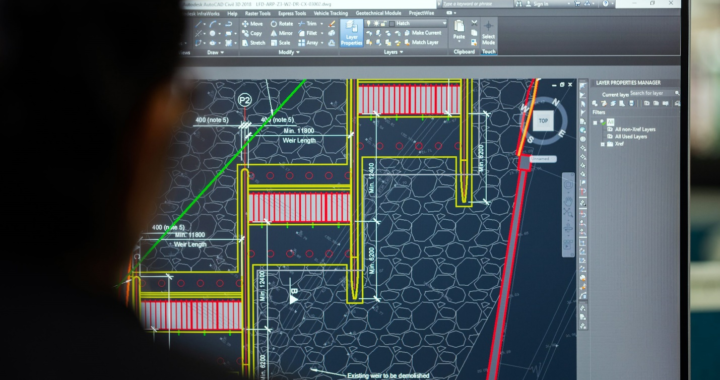The digital forensics landscape has evolved dramatically over the past decade. Ten years ago, the field of digital forensics was already an essential part of criminal investigations and corporate security. However, the technologies, tools, and strategies used then were quite different from what we see today. This blog will explore the state of digital forensics a decade ago, delving into the technologies, tools, and methodologies used by digital forensic engineers and how these professionals solved cases during that period.
The Digital Forensics Landscape a Decade Ago
Ten years ago, the digital forensics landscape was dominated by a set of established tools and techniques that were constantly evolving to keep pace with the rapid advancement of technology. The field was primarily concerned with the extraction, preservation, analysis, and presentation of digital evidence, often in the context of criminal investigations, civil litigation, and corporate security breaches.
The rapid proliferation of digital devices in the early 2010s led to a surge in demand for skilled professionals like digital forensic engineers and data forensic experts. These specialists were responsible for extracting data from computers, smartphones, and other digital devices to uncover evidence that could be used in legal proceedings. The tools and technologies available at the time were advanced but not as sophisticated or user-friendly as those used today.
Technologies and Tools Used in Digital Forensics 10 Years Ago
The digital forensics landscape from a decade ago was markedly different from today, characterized by the use of foundational technologies and tools that have since evolved. Back then, digital forensic professionals relied on a set of specialized tools to uncover and analyze digital evidence, crucial for criminal investigations, corporate inquiries, and legal cases. This period marked a significant era where foundational practices were established, setting the stage for the sophisticated techniques we use today.
Computer Forensics Tools
In the early 2010s, computer forensics was a major component of the digital forensics landscape. The primary tools used for computer forensics were software applications designed to create bit-by-bit copies of hard drives and other storage media. Tools such as EnCase, FTK (Forensic Toolkit), and Sleuth Kit were widely used by digital forensic engineers. These tools allowed forensic professionals to perform detailed analyses of file systems, recover deleted files, and examine the metadata associated with digital files.
EnCase and FTK were particularly popular among data forensic experts because of their comprehensive feature sets and the ability to automate many aspects of the forensic process. These tools could create forensic images, analyze email databases, and search for specific keywords across large datasets. However, the tools required significant expertise to use effectively, and forensic professionals often needed to understand the underlying file systems and operating systems to interpret the results correctly.
Mobile Device Forensics
A decade ago, mobile device forensics was a growing field within the digital forensics landscape. As smartphones became more prevalent, the need for forensic cell phone data recovery increased. The tools available for mobile device forensics, however, were relatively limited compared to those for computer forensics.
Tools like Cellebrite UFED and XRY were among the most popular for extracting data from mobile devices. These tools could recover text messages, call logs, contacts, and sometimes even deleted data. However, due to the rapid evolution of mobile operating systems and hardware, digital forensic engineers often face challenges in keeping up with the latest encryption methods and data storage techniques employed by smartphone manufacturers.
Digital Video Forensics
Digital video forensics was another important area within the digital forensics landscape ten years ago. The focus of this field was on analyzing video footage to uncover hidden details, authenticate the source of the video, and enhance video quality to make crucial evidence more visible.
Tools like Amped FIVE and Ocean Systems’ dTective were commonly used for digital video forensics. These tools allowed data forensic experts to perform frame-by-frame analysis, correct lens distortion, and enhance the visibility of objects or persons in poorly recorded footage. However, the tools often required significant manual input and expertise, as automated video analysis algorithms were not as advanced as they are today.
Audio Forensic Services
Audio forensic services were also a significant part of the digital forensics landscape. Audio forensic experts were called upon to analyze audio recordings for a variety of purposes, including voice identification, authentication of recordings, and enhancement of audio quality to make speech or other sounds more intelligible.
A decade ago, software tools like Adobe Audition and Audacity were commonly used by audio forensic experts. These tools provided basic functionalities for noise reduction, equalization, and time-frequency analysis. However, much of the work was manual, requiring audio forensic experts to apply their knowledge and skills to achieve the desired results.
How Digital Forensic Engineers Solved Cases 10 Years Ago

Despite the limitations of the tools available a decade ago, digital forensic engineers were adept at solving complex cases using a combination of technical expertise, analytical thinking, and perseverance. The process typically involves several steps:
Evidence Collection and Preservation
The first and most critical step in digital forensics was the collection and preservation of evidence. Digital forensic engineers utilized tools such as EnCase and FTK (Forensic Toolkit) to ensure that digital evidence was captured accurately and remained intact. These tools allowed forensic professionals to create exact bit-by-bit images of digital storage devices, including hard drives and USB drives.
The process involved using hardware write blockers to prevent any alterations to the original data while creating these images. By preserving the integrity of the original evidence, forensic professionals ensured that it could be used in court without questions of tampering or contamination. The goal was to maintain an unbroken chain of custody, which was crucial for the credibility of the evidence in legal proceedings.
Data Analysis

Once the evidence was collected, digital forensic engineers moved on to the data analysis phase. Tools like EnCase and FTK were instrumental in this process. These tools allowed forensic experts to delve into the data, searching for relevant information such as deleted files, system logs, and metadata.
EnCase provided comprehensive functionalities for analyzing file systems, recovering deleted items, and performing keyword searches across large datasets. FTK, on the other hand, offered automated analysis features that helped streamline the process of data examination. Data forensic experts used these tools to sift through vast amounts of digital data, identifying crucial pieces of evidence that were pertinent to the case.
Correlation and Hypothesis Testing
After data analysis, the next step was to correlate findings and test hypotheses. This involved piecing together information from various sources to build a coherent narrative. Digital forensic engineers examined the data to establish connections between different pieces of evidence, such as file timestamps, user activities, and communications.
For example, if a case involved unauthorized access to a system, forensic professionals would correlate login records with file access logs to determine who accessed what and when. This step was essential for forming a clear understanding of the events and activities involved in the case. Hypotheses were tested against the data to verify their accuracy and relevance. This process often requires creativity and deep technical knowledge to interpret complex information and identify key evidence.
Reporting and Testimony
The final phase of the forensic investigation was reporting and testimony. Digital forensic engineers compiled detailed reports that summarized their findings, methodologies, and conclusions. These reports were intended to be clear and comprehensible, providing a complete account of the evidence and how it was analyzed.
In addition to written reports, forensic professionals often had to provide testimony in court. They were required to explain their findings and the forensic process in a way that was understandable to judges, juries, and other legal professionals. This aspect of the job demanded not only technical expertise but also strong communication skills, as digital forensic engineers needed to convey complex technical concepts in layman’s terms.
The Evolution of Digital Forensics
Over the past decade, the digital forensics landscape has continued to evolve, with new tools and techniques emerging to address the growing complexity of digital evidence. However, the fundamental principles of digital forensics remain unchanged: preserving the integrity of evidence, analyzing data systematically, and presenting findings clearly and accurately.
At Eclipse Forensics, we have kept pace with these advancements to provide cutting-edge digital forensic services. Our team of experienced digital forensic engineers and data forensic experts are equipped with the latest tools and knowledge to handle all types of digital investigations, from forensic cell phone data recovery to digital video forensics and audio forensic services. Whether you are dealing with a complex corporate investigation or a sensitive legal case, we have the expertise to help you uncover the truth and achieve your goals.
Contact us today to learn more about how our comprehensive digital forensic services can support your investigative needs.




